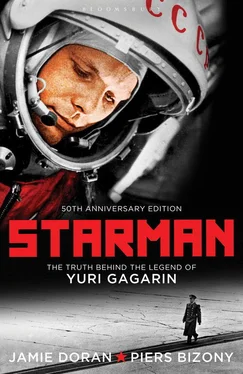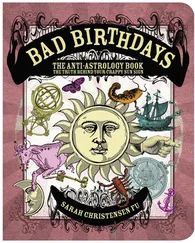Details of Gagarin’s diploma work are derived from extensive interviews with Sergei Belotserkovsky, his tutor at the Zhukovsky Academy.
A detailed account of the Voskhod II mission can be found in Harvey, The New Russian Space Programme , pp. 82–8. See also: Newkirk, Almanac of Soviet Manned Spaceflight , pp. 35–7.
Harford, Korolev , pp. 49–63.
Conversation with James Oberg.
For a valuable account of Mishin’s troubles, see Sagdeev, Roald, The Making of a Soviet Scientist , New York: John Wiley & Sons, 1994, pp. 123–4, 179–81.
The Apollo I fire exposed some scandalous business relationships and incompetencies associated with the NASA moon project. For an eye-opening account, see Young, Journey to Tranquillity , pp. 212–48.
Archives of Dr John Logsdon, Space Policy Institute, George Washington University, Washington, DC, National Intelligence Estimate Number 11-1-67, March 2, 1967, ‘The Soviet Space Programme’, p. 18.
Quoted in Oberg, Red Star in Orbit , pp. 90–91.
Yevsikov, Victor, Re-entry Technology and the Soviet Space Programme: Some Personal Observations , Reston, VA: Delphic Associates, 1982, quoted in Oberg, Uncovering Soviet Disasters , p. 171.
Details of Gagarin’s involvement in the Soyuz technical assessment are confirmed by ex-KGB officer Venyamin Russayev, at the specific request of Valentina Gagarina.
Detailed technical accounts of the possible sequence of failures during Komarov’s flight can be found in Newkirk, Dennis, Almanac of Soviet Manned Spaceflight , pp. 58–64. See also: Hooper, The Soviet Cosmonaut Team , Vol. II, pp. 133–6; Harvey, The New Russian Space Programme , pp. 107–10;Gatland, Kenneth, ‘The Soviet Space Programme After Soyuz 1’, Spaceflight magazine, Vol. 9, No. 9, 1967, pp. 298–9; Shepard & Slayton, Moonshot , pp. 250–53.
The interview, under the headline ‘US Electronic Espionage: a Memoir’, was published in the left-leaning American journal Ramparts , which went out of business in 1980. According to a senior source in the US State Department, the National Security Agency (NSA) considered prosecuting Fellwock. He could have been imprisoned, but the case was dropped because the NSA did not want to admit in open court to their radio monitoring of Soviet space communications.
Hooper, The Soviet Cosmonaut Team , Vol. I, p. 144.
Quoted in Golovanov, Our Gagarin , p. 214.
Ibid., p. 270. Incidentally, this is the only paragraph in a 300-page book to suggest that Gagarin’s professional circumstances were sometimes painful for him.
Leskov, Sergei, ‘The Mystery of Gagarin’s Death’, Izvestia , March 28, 1996.
Ibid.
Transcripted quotes from original commission reports from the papers of Sergei Belotserkovsky.
Ibid.
Letter from Igor Kacharovsky, July 3, 1986, from the papers of Sergei Belotserkovsky.
The authors are grateful to the Martin Baker company for advice on ejection-seat procedures.
Julin, Alexander, ‘Gagarin & Serugin – The Last Flight’, Moscow News , No. 3, week of January 28–February 4, 1996.
Interview with Koloshov, Argumenti i Facti , No. 12, week of April 2–April 9, 1995.












